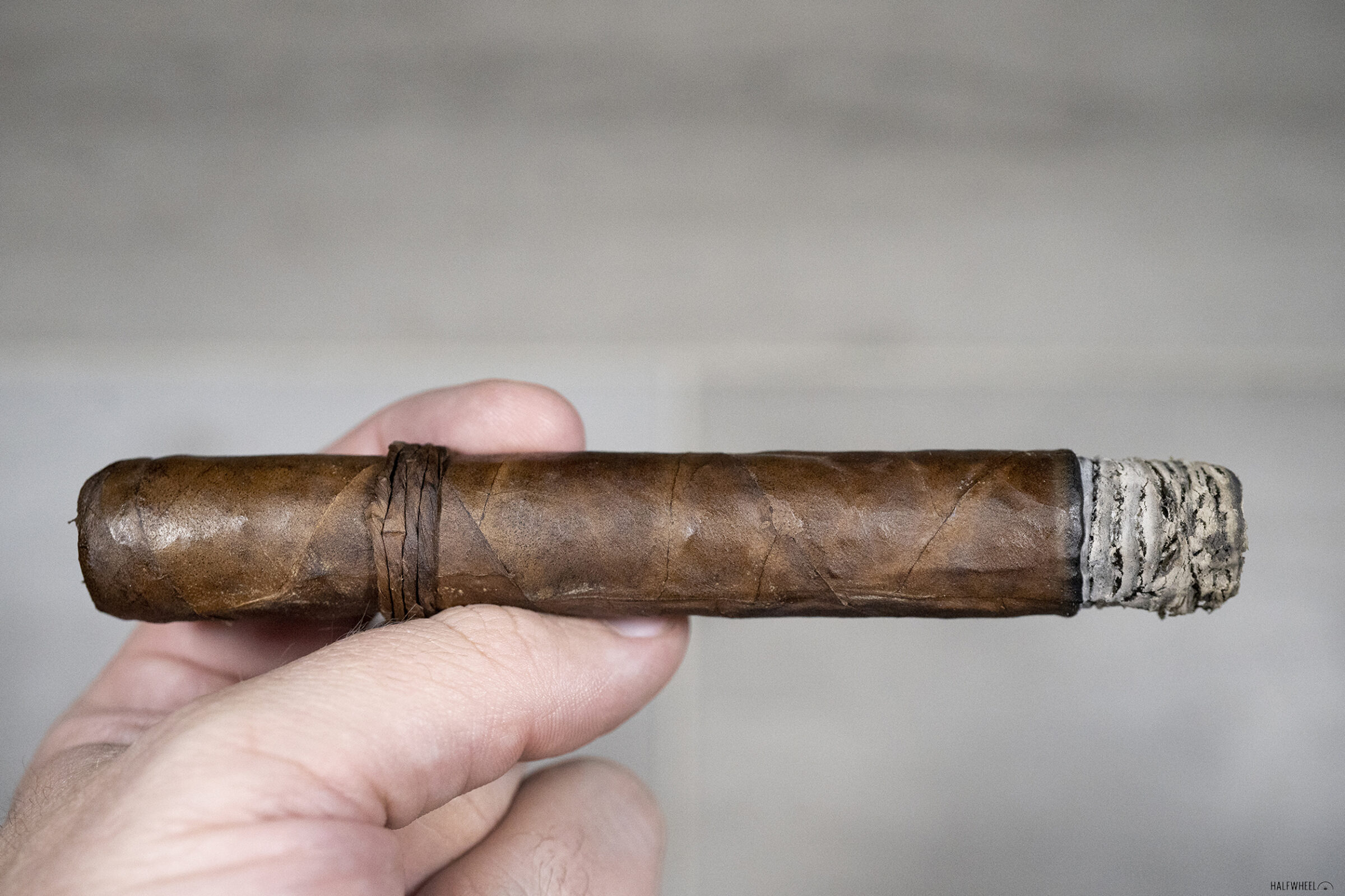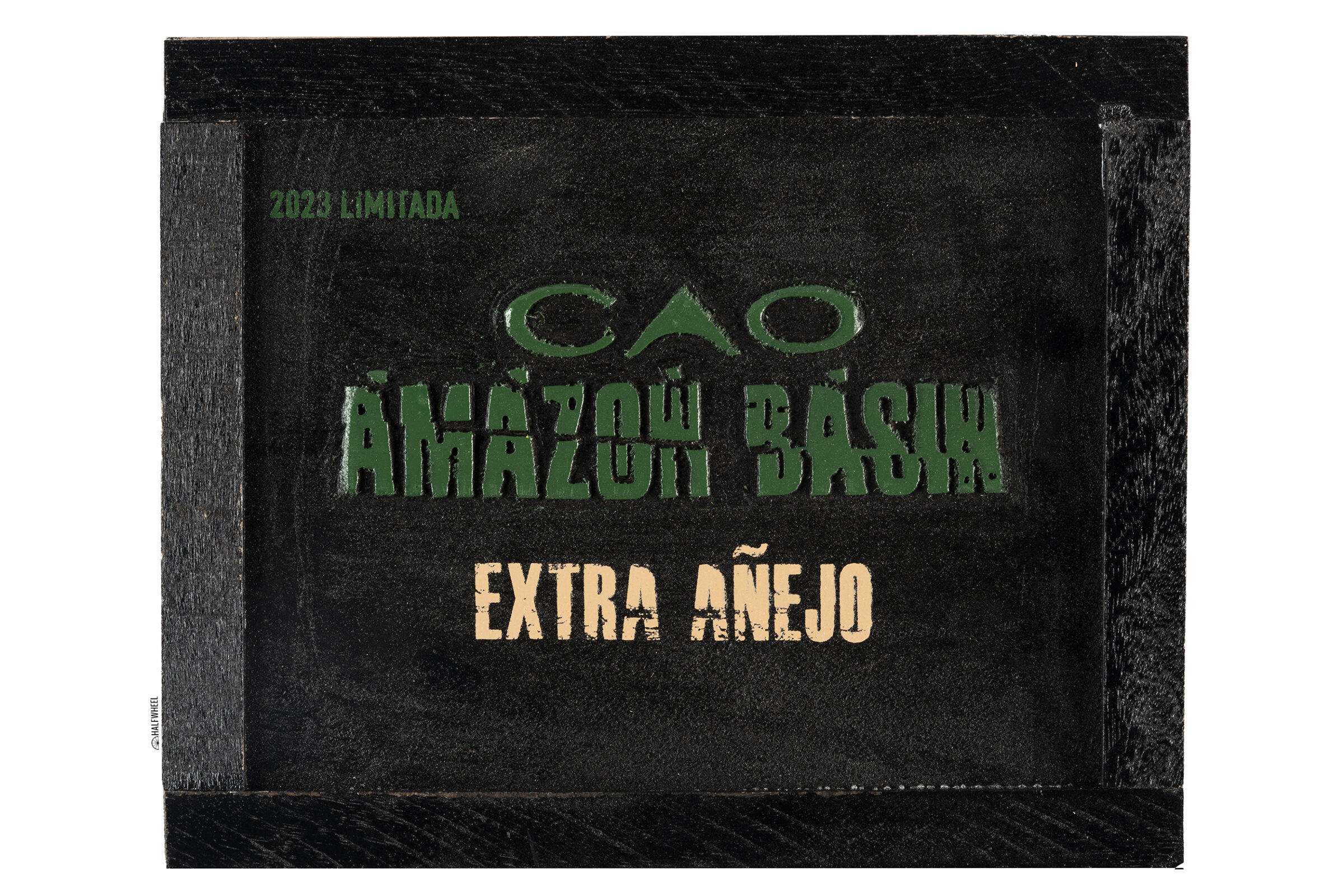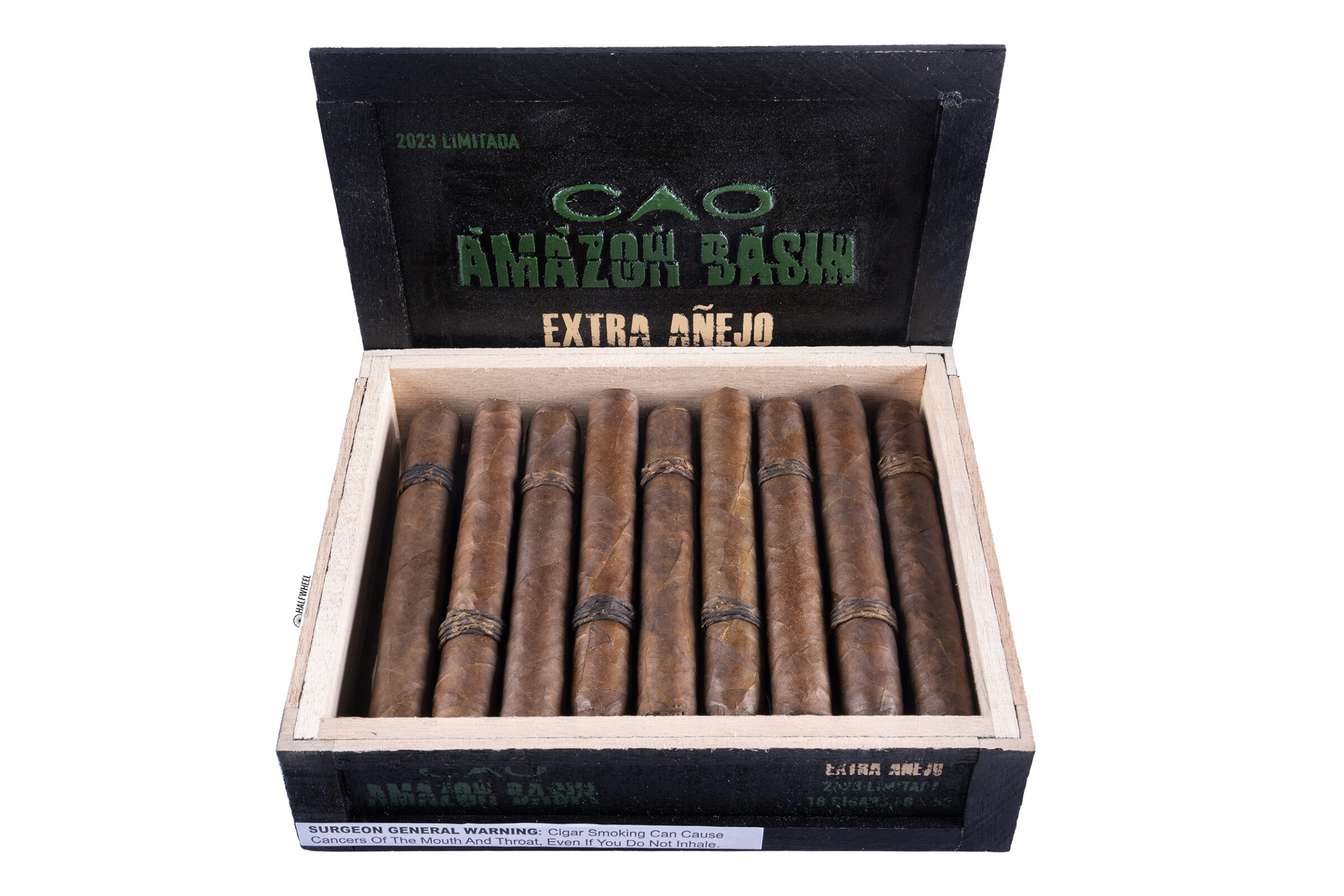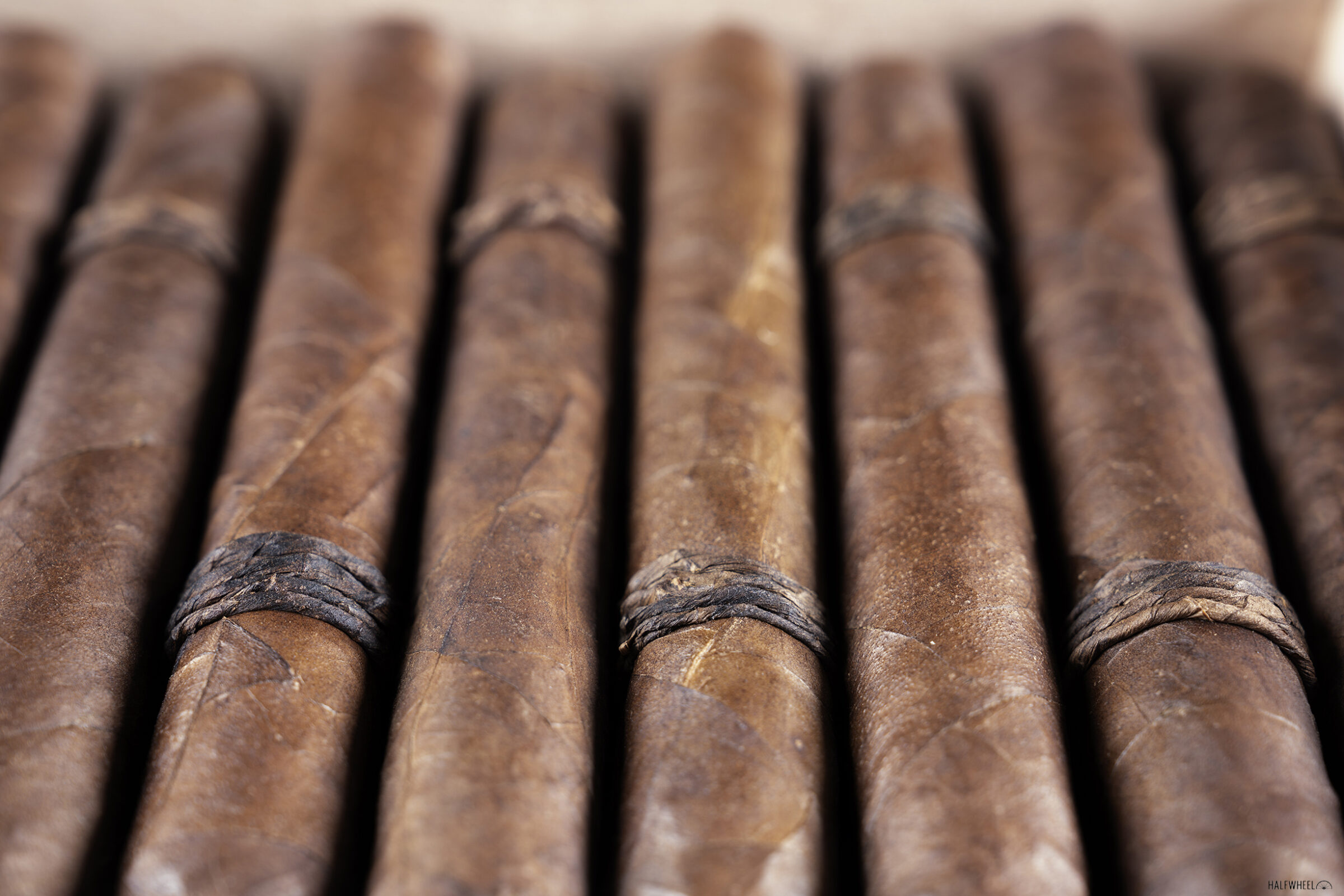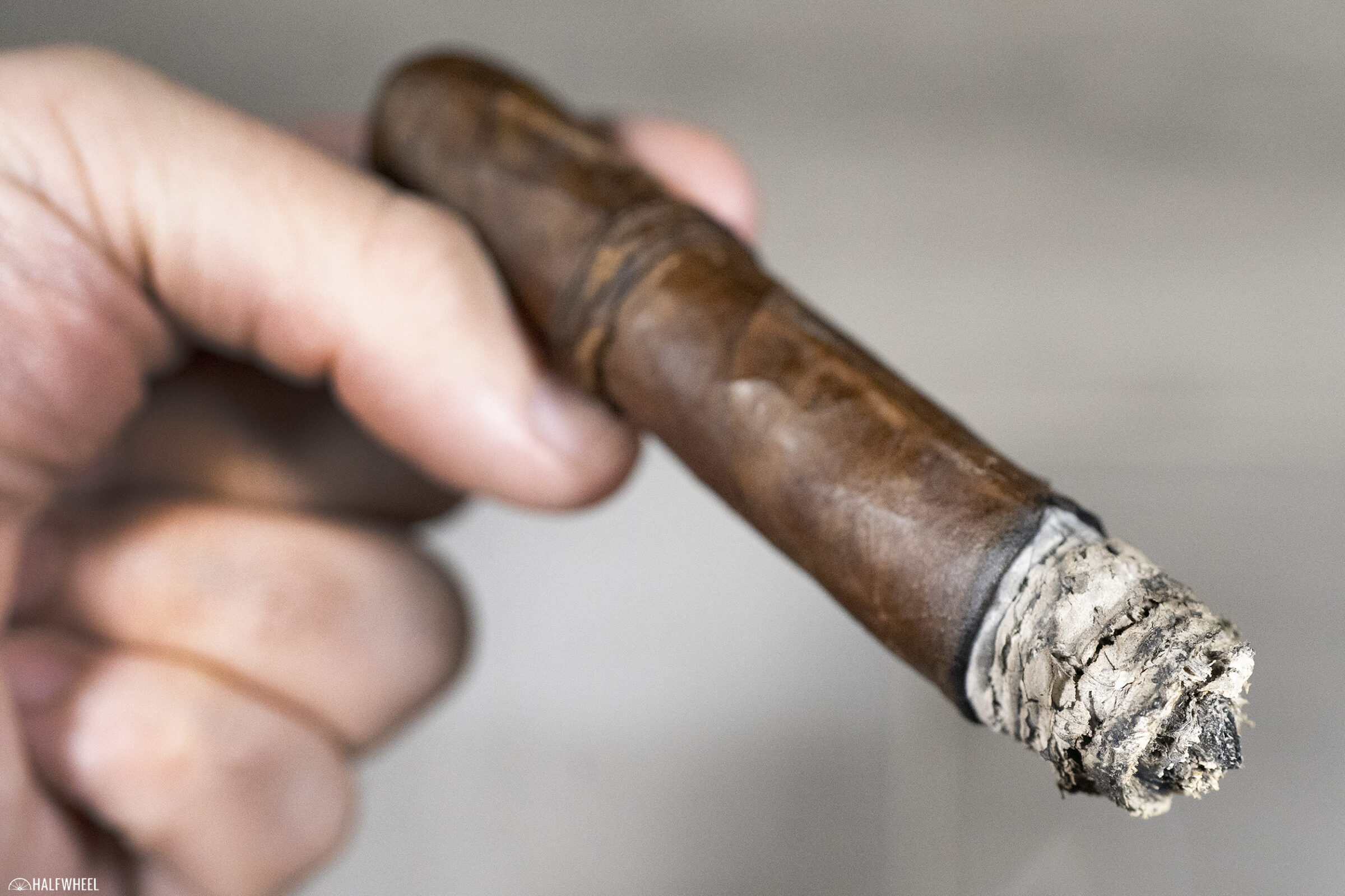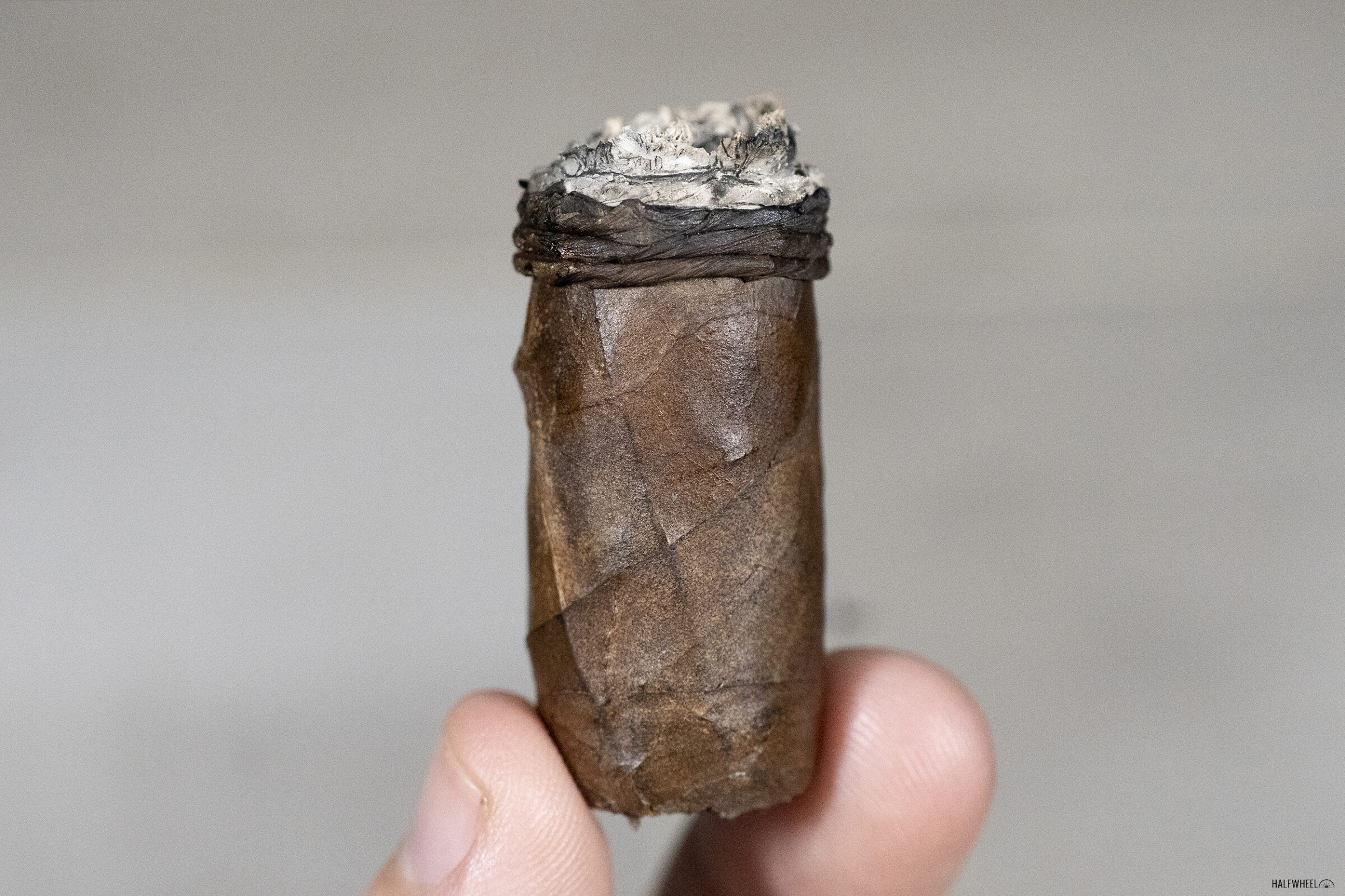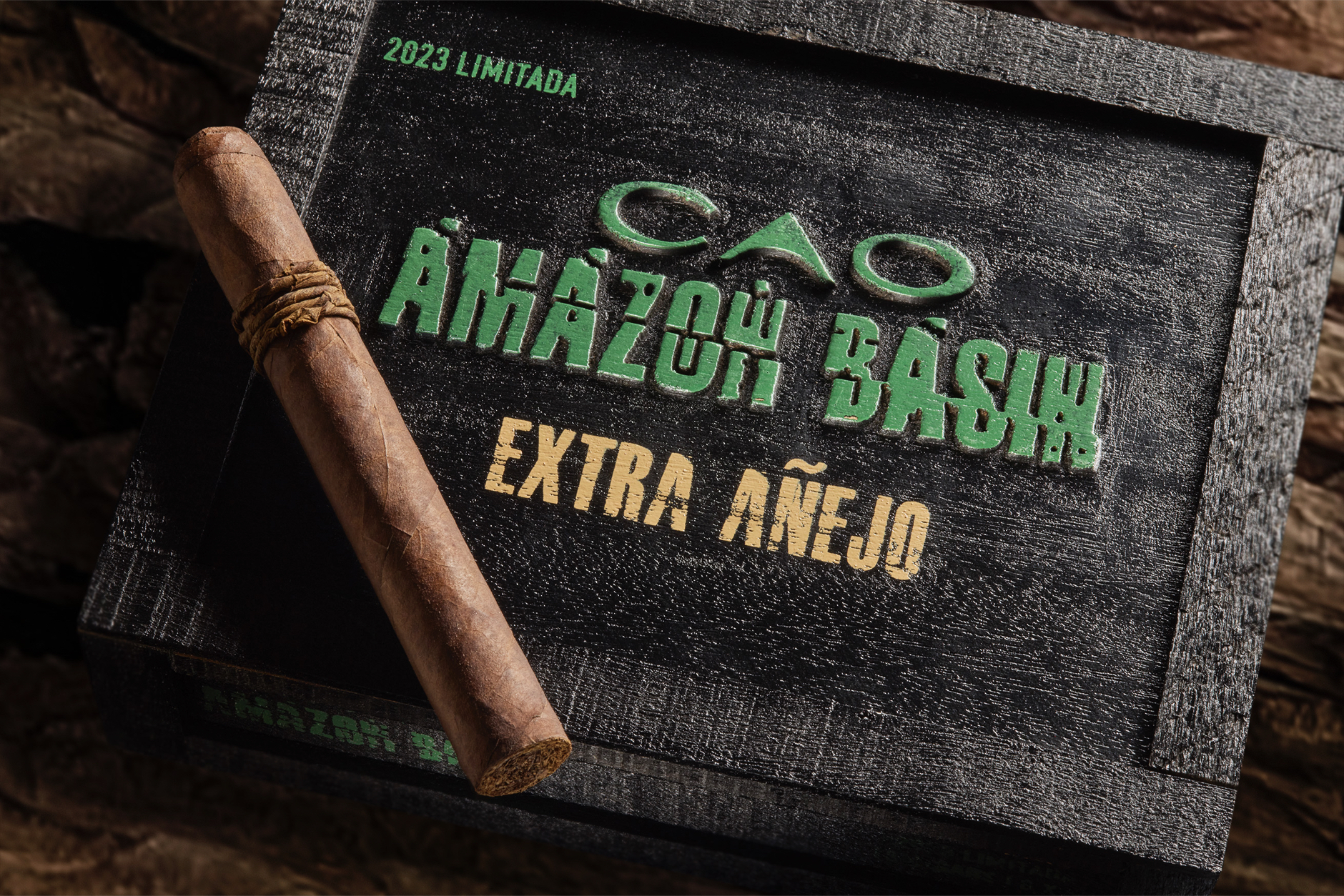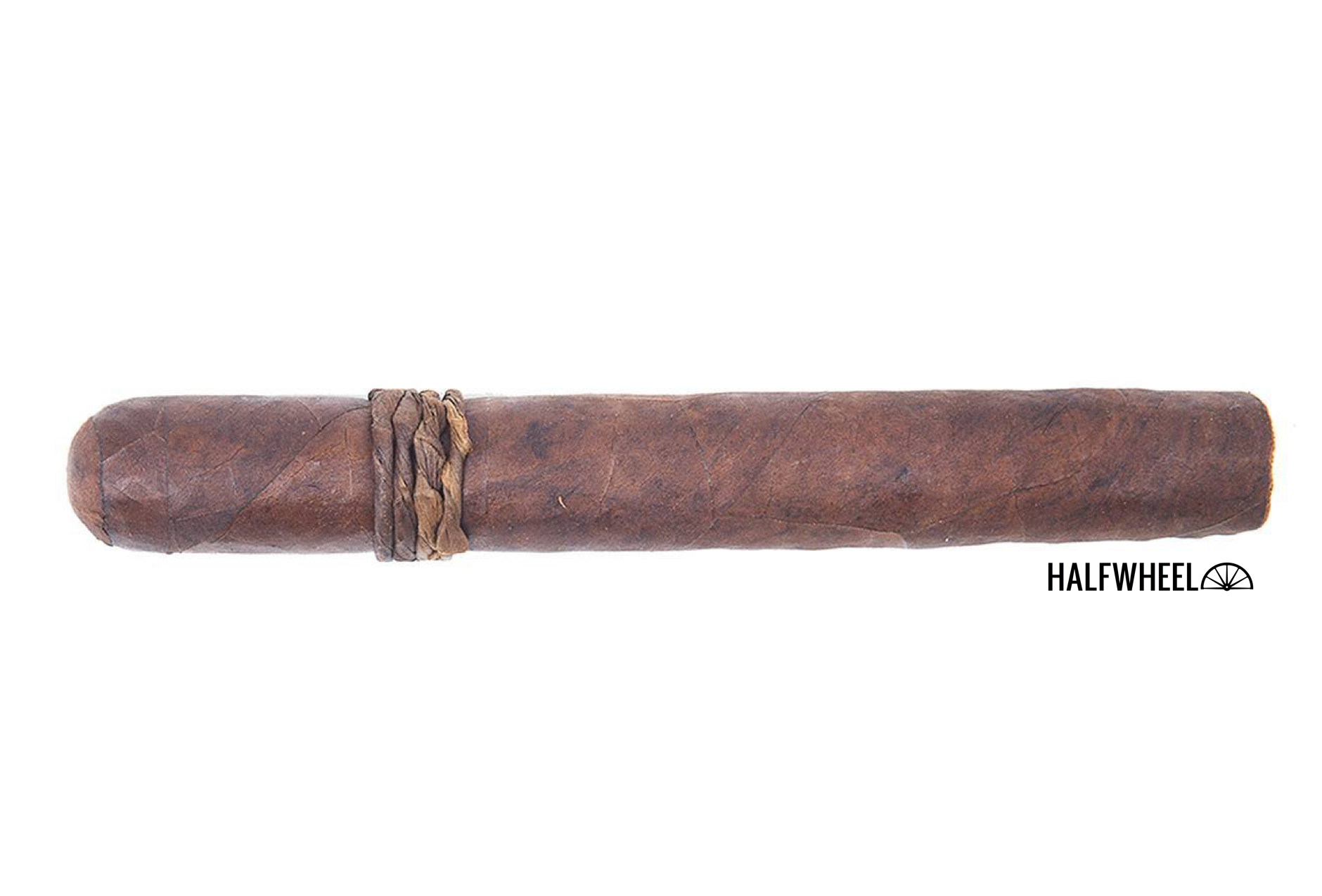When thinking about the fairly extensive list of lines that have been released under the CAO brand over the years, there are two that come to mind as being fairly big hits: La Traviata and Amazon Basin. The first was known for being a value-oriented cigar that delivered a profile that was considered refined and flavorful beyond its price point, while the latter is a series of limited editions that draw on a unique tobacco grown in the Amazon rainforest of Brazil.
The CAO Amazon Basin line debuted in 2014 and is blended around Bragança tobacco, which General Cigar Co. says is sourced from the Amazon rainforest and harvested just once every three years and rolled into tubes for a fermentation period that lasts six months. That’s before the tobacco begins its journey out of the rainforest, a process that is said to involve canoes as well as more familiar methods of transportation.
Along with that rainforest-grown tobacco, the blend features fillers from Colombia and the Dominican Republic, while the binder comes from Nicaragua and the wrapper is an Ecuadorian-grown Sumatra leaf.
For the 2023 installment in the Amazon Basin series, General Cigar Co. released the cigar in a 6 x 52 toro vitola that has been resting in a Spanish cedar-lined aging room at the STG Estelí factory for two years. It’s this period of rest that gave the cigar its name, CAO Amazon Basin Extra Añejo, as añejo is the Spanish word for aged, a term that should be familiar to drinkers of tequila and other spirits.
“When we launched Amazon Basin, we were the first in the world to use tobacco from the Amazon,” said Ed Lahmann, senior brand manager of CAO, in a press release. “Today, CAO Amazon Basin still stands out as one of the most important blends we have ever developed. Since we never rest on our laurels, we decided to take a page from the whisky world and age the finished Amazon Basin cigars. The result is a smoke that is refined and rounded, and an absolute pleasure to smoke.”
Production of the CAO Amazon Basin Extra Añejo is limited to 5,000 boxes of 18 cigars, which shipped to stores on Jan. 9 and came priced at $14.99 per cigar.
- Cigar Reviewed: CAO Amazon Basin Extra Añejo
- Country of Origin: Nicaragua
- Factory: STG Estelí
- Wrapper: Ecuador (Sumatra)
- Binder: Nicaragaua
- Filler: Brazil (Bragança), Colombia & Dominican Republic
- Length: 6 Inches
- Ring Gauge: 52
- Vitola: Toro
- MSRP: $14.99 (Box of 18, $269.82)
- Release Date: Jan. 9, 2023
- Number of Cigars Released: 5,000 Boxes of 18 Cigars (90,000 Total Cigars)
- Number of Cigars Smoked For Review: 3
I have to admit that I’m surprised by how the cigar looks when I take it out of the cellophane, as the wrapper of the first cigar looks almost piecemealed together between the veins and coloration. There are spots where the seams aren’t flat, and the veins almost look like seams where the ends of smaller pieces of wrapper would have been stacked upon each other. It’s quite an interesting look, and one I’m not sure I’m in love with at first or second glance. The second and third cigars are better and look much more familiar, though still on the rustic end of the spectrum. The wrappers have a bit of an oily sheen to them, and while their color looks fairly even at first look, subsequent inspections reveal a bit more variance, particularly as the light gets brighter. In the case of the first cigar, I was really surprised to see it through the camera lens and under a more direct light, as it seemed to reveal what the overhead light in my office couldn’t. The cigar is generally firm but that doesn’t mean it doesn’t have the occasional soft spot. Outside of the flatness of the seams, the cigars look well-rolled, and I really like the twisted tobacco that forms the band. The foot has an aroma that reminds me of a thick, meaty salami without a lot of fat or seasoning to it. There’s a bit of sweetness that ties dovetails into some oiliness, and the aroma tries to bring in some floral or mixed fruit aromas. The cold draw is good in terms of airflow, and while the flavor isn’t particularly vibrant, the tobacco leaves a bright, peppery tingle on my lips and tongue. There is a bit more of the salami flavor but it isn’t as thick, and I can’t seem to find much pepper or sweetness in the flavor yet.
I’ve always thought that the CAO Amazon Basin line has had a distinctive flavor profile due in part to the use of the Brazilian tobacco in the filler, and the start of the CAO Amazon Basin Extra Añejo is no exception. It’s a flavor that reminds me of a red chili pepper, but one that’s just different enough from what I usually taste so it catches my attention in a unique way. Around the flavor is a dry woodiness, a bit of black pepper and touches of dry earth, making for a combination that is both familiar and different enough to be attention-grabbing. There are moments where the profile tingles the roof of my mouth, something I note for being a unique sensation as well as how precisely it seems to target the peak of that space. A tiny bit of creaminess comes in ahead of the one-inch mark, and I find the cigar impressive in its layering and development of flavors in this early going. The development continues as a very light drizzle of simple syrup adds some sweetness to the profile. Not long after the first clump of ash drops off, I notice that the distinct pepper and spiciness from the first puffs has left the profile, which costs the cigar what made it unique but doesn’t adversely affect the enjoyment. I’m also beginning to notice how smooth the smoke is, helped by the creaminess but I’m inclined to think the aging is helping as well. Retrohales at the end of this section have an enjoyable touch of pepper that provides a slight accent to the profile. The cigar starts this section medium-plus in flavor before dialing back to medium, body is medium and strength is mild. Construction is very good thus far, though I find smoke production to vary and deliver less than I would like, and one cigar has a draw that is too firm.
There’s a pleasant creaminess that enters the profile as the second third gets underway, a change that further smooths out the first impression of puffs but doesn’t mute the spiciness that appears on the finish. It also isn’t so entrenched that it prevents some rocky earthiness from emerging as well, a change that gives the smoke both texture and taste. It’s not a big shift in the flavor, and it has yet to come along with the spiciness found in those first puffs, which means it’s not quite as intense as the first puffs were. Even with this change, the flavor intensity is still on the milder side, especially given a profile that, on paper, would seem to be further up the flavor intensity scale. However, that seems to change as the burn line approaches the midway point. While I don’t want the profile to simply go back and reprise previous flavors, I do want more of what makes this blend distinctive and unique as it has a habit of slipping into familiar territory. Retrohales help that process along, as it seems my olfactory nerves are better equipped to pick up the nuance in the pepper as it returns and changes the profile ever so slightly in a way that my taste buds seem not quite capable of determining. Given that retrohales are also approachable and fairly mild by my standard, this allows for me to take more of them without feeling like my nostrils are being punished. A dry wood that produces a lot of taste bud tingle closes out this section as I can feel the moisture being sucked out of my mouth. The first sample shows some combustion issues in this section, while the other two do better but still need regular puffs in order to stay burning. While it can struggle to stay lit, the burn line is remarkably even, and smoke production has ticked up a bit to a more average level, while the draw remains very good. Flavor is back into medium-plus territory, body is medium if not medium-plus, and the strength feels like it’s ticking up a bit as well, but is still shy of medium and far from having me think of this as a strong cigar.
Much like it did at the start of the second third, the CAO Amazon Basin Extra Añejo starts its final third with creaminess leading the profile, though again it’s not enough to overshadow the other flavors, which are now a bit earthier with a peppery accent on the finish. There’s still some of the dry wood hanging around, and in one sample, it is really driving the profile. There are some puffs scattered amongst the three samples where this change also has the smoke feeling rougher, which feels like a natural progression given the flavor change. The creaminess eventually departs, and while it affects the flavor a bit, it seems to have more of an effect on the body of the smoke, making it taste thinner than it had been previously. The mouth-drying effect also reduces, though the dry wood remains and combines with a bit of familiar mixed pepper but not the spiciness from earlier. Sweetness is gone as well, and while the profile is still enjoyable, it is noticeably less complex, dynamic and layered than earlier. As the final third continues, I find my attention drawn to how—or if—the burn line will handle the twisted tobacco that serves as a cigar band. Each cigar struggles with it and requires a relight to get through it, though it’s seemingly not easy for any of the samples. I did consider taking it off, but given that it is attached quite securely, neither sliding off easily or providing an immediately obvious way to unwrap it, particularly with a rapidly approaching burn line and the risk of burning my fingers. Once the burn line does make it through the band, the creaminess returns to give the body more fullness and the flavor more roundness, while a sprinkle of black pepper gives the profile a more pronounced tingle and intensity. It’s a change that pushes the flavor up to medium-full, body to medium-plus, and strength to medium-minus. Construction-wise, the first cigar struggles mightily to stay lit throughout this section, leading me to think it was in need of dry boxing and that the other two might be as well. The burn line remains even, draw is good and smoke production is decent when burning. In the case of that first cigar, I give up at the tobacco band and put it in the ashtray, while I decided to push it with the other two, a decision that did pay off nicely.
Final Notes
- The first cigar I smoked had serious combustion issues in the final third, requiring multiple relights in a futile attempt to keep the cigar burning. While I didn’t dry box the second cigar, I did pull the third one out of the humidor at the same time and gave it a couple of hours out of its cellophane and in an empty cigar box.
- The cellophane used for the cigars was darker than average, leading me to wonder if the cigars were aged in the cellophane, as that would be one possible explanation. Aging cigars in cellophane is not something that is common, but it would explain the signs of age that they showed.
- When I was in Nicaragua for the 2023 Puro Sabor festival, I visited STG Estelí, the factory that made these cigars. When we visited one of the aging rooms, we saw another project called CAO Pilón Añejo, which were being aged in boxes inside the aging room, effectively a microclimate inside a climate-controlled environment.
- I did find it interesting that the press release for the CAO Pilón Añejo indicated the cigars were being produced at STG Danlí in Honduras, though it’s not uncommon for production to move from one facility to another based on capacity issues.
- That said, I didn’t get to see inside the boxes, however, so I can’t speak to whether or not the cigars were already in cellophane.
- It’s a small detail, but I’m curious as to how these were stored during the aging process. First, given the tobacco bands, which I’m assuming were applied when the cigars were rolled, that means they wouldn’t lay as flatly as other cigars, leading me to wonder if they had to be stacked a certain way. That in turn leads me to wonder about the excess moisture being released from the cigars during aging, since most cigars are laid so that the feet are all on one side of the aging crate.
- Beyond the original CAO Amazon Basin release, there have been a number of offshoot releases, namely the CAO Amazon Fumo em Corda, CAO Amazon Anaconda and CAO Orellana.
- When thinking about scoring these cigars, I found myself conflicted in how to reward distinctiveness versus familiarity. The second cigar, in particular, got me thinking about this, as the first third was very good and distinctive, while the second third was still enjoyable but not as unique. I want to reward that distinctiveness, especially when done well, but not necessarily punish a cigar for still being good and palate-friendly, even if it isn’t inherently distinctive.
- There is just a bit of a nicotine hit that comes along in the final inch of the cigar. It’s enough to be noticeable but not enough to have me looking for white sugar or feeling like I need to lie down.
- General Cigar Co. adveritses on halfwheel.
- The cigars for this review were purchased by halfwheel.
- Final smoking time was two hours and 50 minutes on average.
- Site sponsors Atlantic Cigar Co., Cigars Direct, Famous Smoke Shop, Gotham Cigars, JR Cigar carries the CAO Amazon Basin Extra Añejo.
Like many, I have long praised the CAO Amazon Basin line as a fantastic cigar. While my recommendation to age cigars is a bit more reserved, I do believe that a bit of time and rest can be very beneficial to the right cigars. Those feelings are challenged to come together in the CAO Amazon Basin Extra Añejo, a cigar that shows both aspects of its name, though with the aging seemingly contributing more to the final product than the Brazilian tobacco that made the line famous. It's there in the first inch or so of the cigar but then seems to be told to tone it down, which it does, much like a child being hushed by an adult. The cigar is still plenty good and enjoyable, but this aging seems to rob the cigar of its most distinguishable characteristic for the bulk of the smoking time, and without that component, it is an experience that I feel any number of cigars in my local retailers' humidors could have delivered. I'm also a bit concerned by the combustion issues in the second half of the cigar, something that seemingly should not be an issue for any cigar on a store shelf, let alone one that has had plenty of time to release extra moisture. If you like the CAO Amazon Basin line, the Extra Añejo version is still one worth trying, but I'm more inclined to wait until the next version comes out, and hopefully, it's one without the aging on it.

